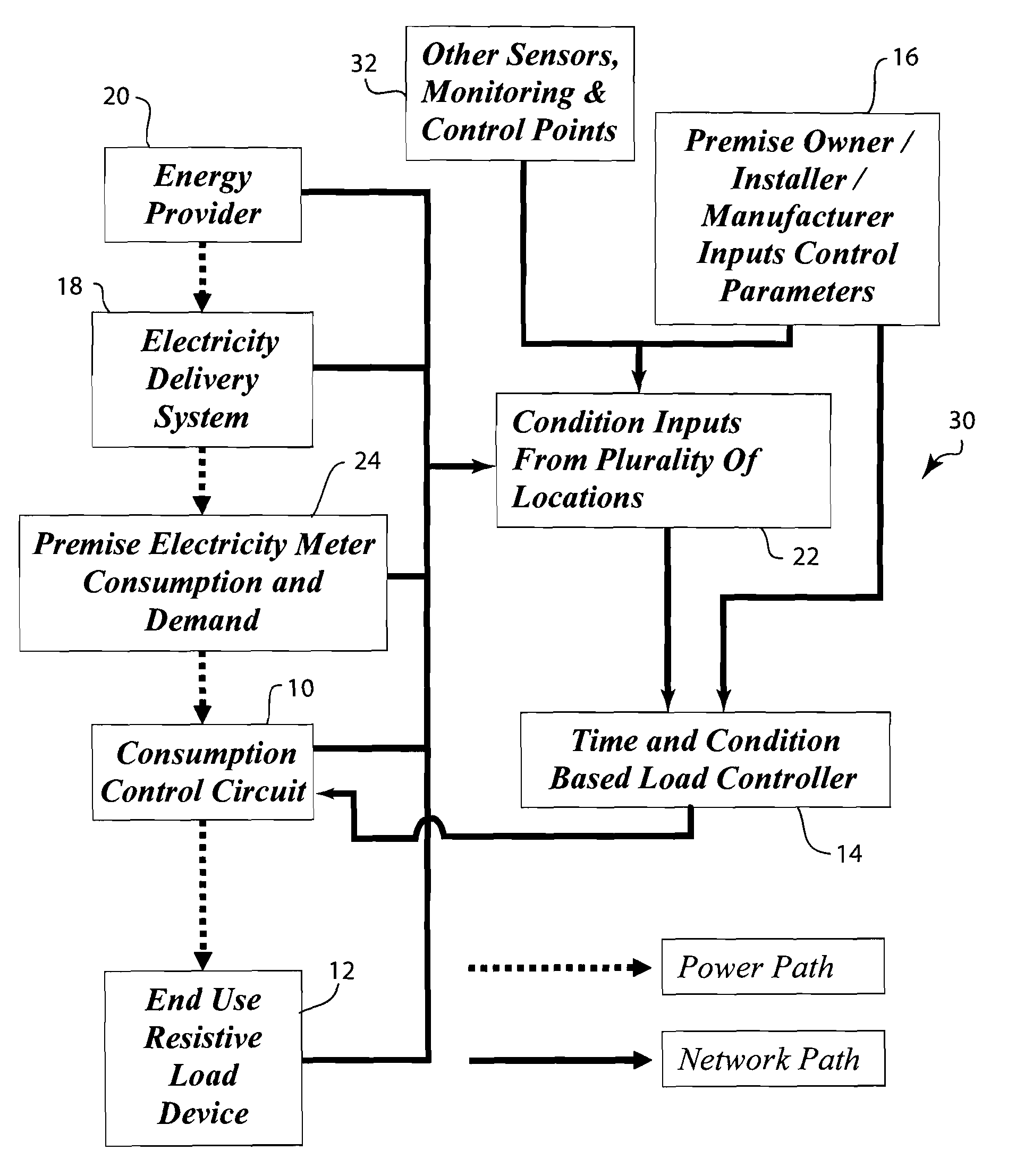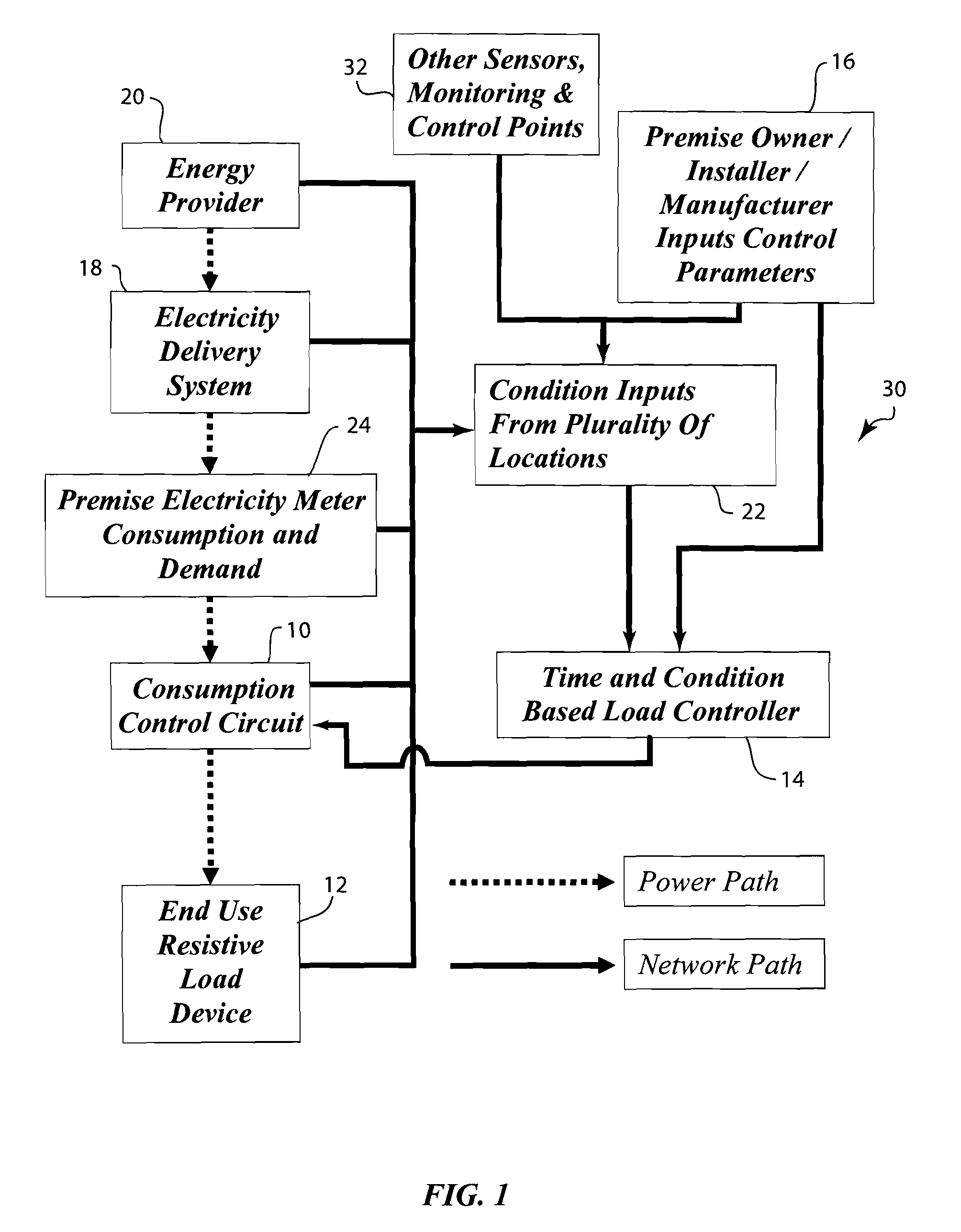System and method for demand limiting resistive load management
- Summary
- Abstract
- Description
- Claims
- Application Information
AI Technical Summary
Benefits of technology
Problems solved by technology
Method used
Image
Examples
Embodiment Construction
[0016]The invention combines a number of technologies into a system that will manage demand of resistive loads. The invention is designed to limit and / or manage the impact of resistive loads on the premise and the energy delivery system. This management is based on control parameters supplied to the system by anyone of a number of sources, including but not limited to, the premise owner, the installer of the system, an energy provider, the manufacturer of the appliance, the manufacturer of the control system and an energy services company.
[0017]The core of the resistive load demand limiting system shown in FIG. 1 is a triac-based control circuit 10 similar to the one described in U.S. Pat. No. 5,652,503, the disclosure of which is incorporated herein by reference. This triac control circuit 10 regulates the flow of power to a resistive load 12 by clipping the sine wave of the AC power using an embedded processor. If half the sine wave is clipped using this circuit, the total demand ...
PUM
 Login to View More
Login to View More Abstract
Description
Claims
Application Information
 Login to View More
Login to View More - R&D
- Intellectual Property
- Life Sciences
- Materials
- Tech Scout
- Unparalleled Data Quality
- Higher Quality Content
- 60% Fewer Hallucinations
Browse by: Latest US Patents, China's latest patents, Technical Efficacy Thesaurus, Application Domain, Technology Topic, Popular Technical Reports.
© 2025 PatSnap. All rights reserved.Legal|Privacy policy|Modern Slavery Act Transparency Statement|Sitemap|About US| Contact US: help@patsnap.com


